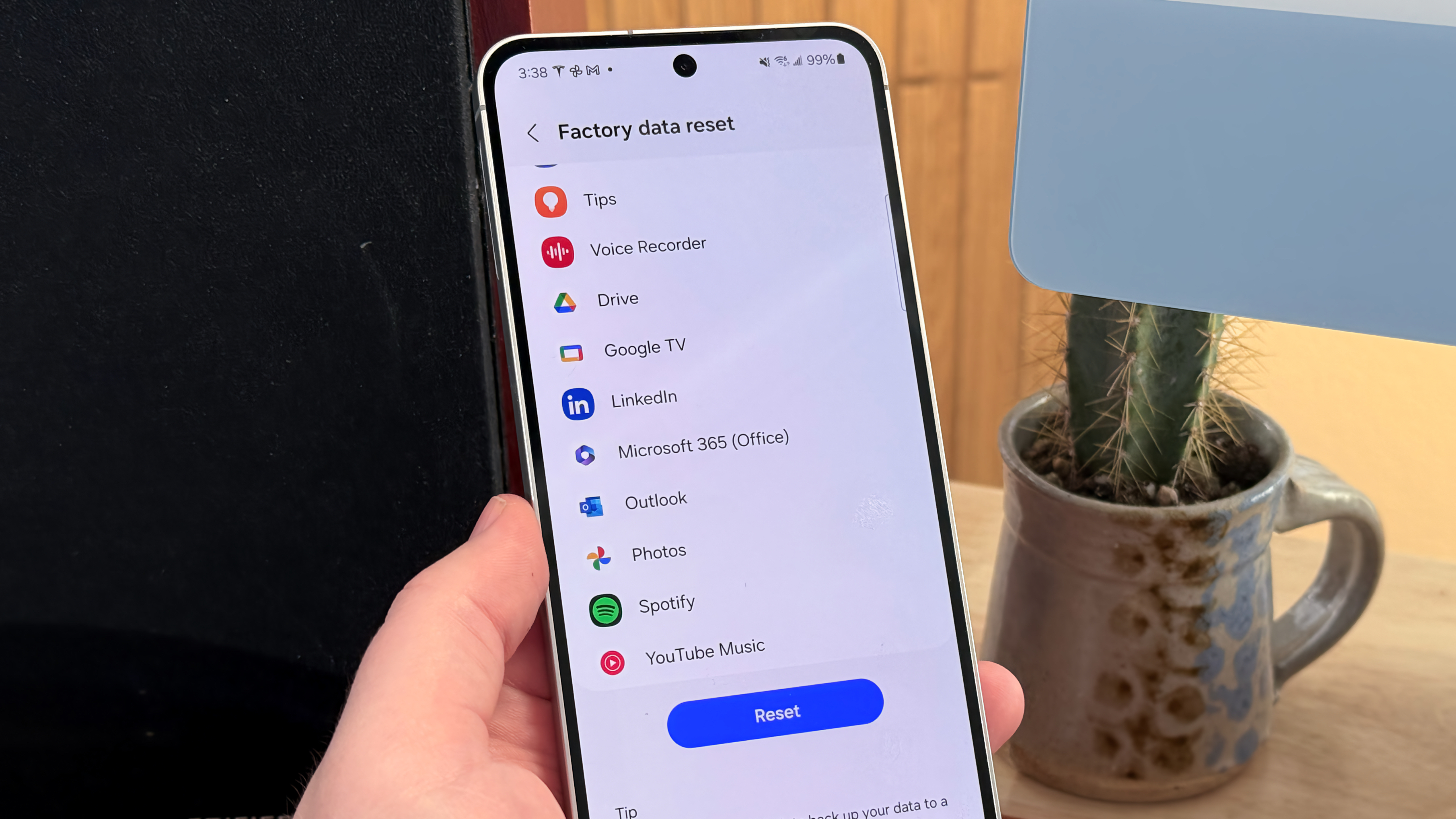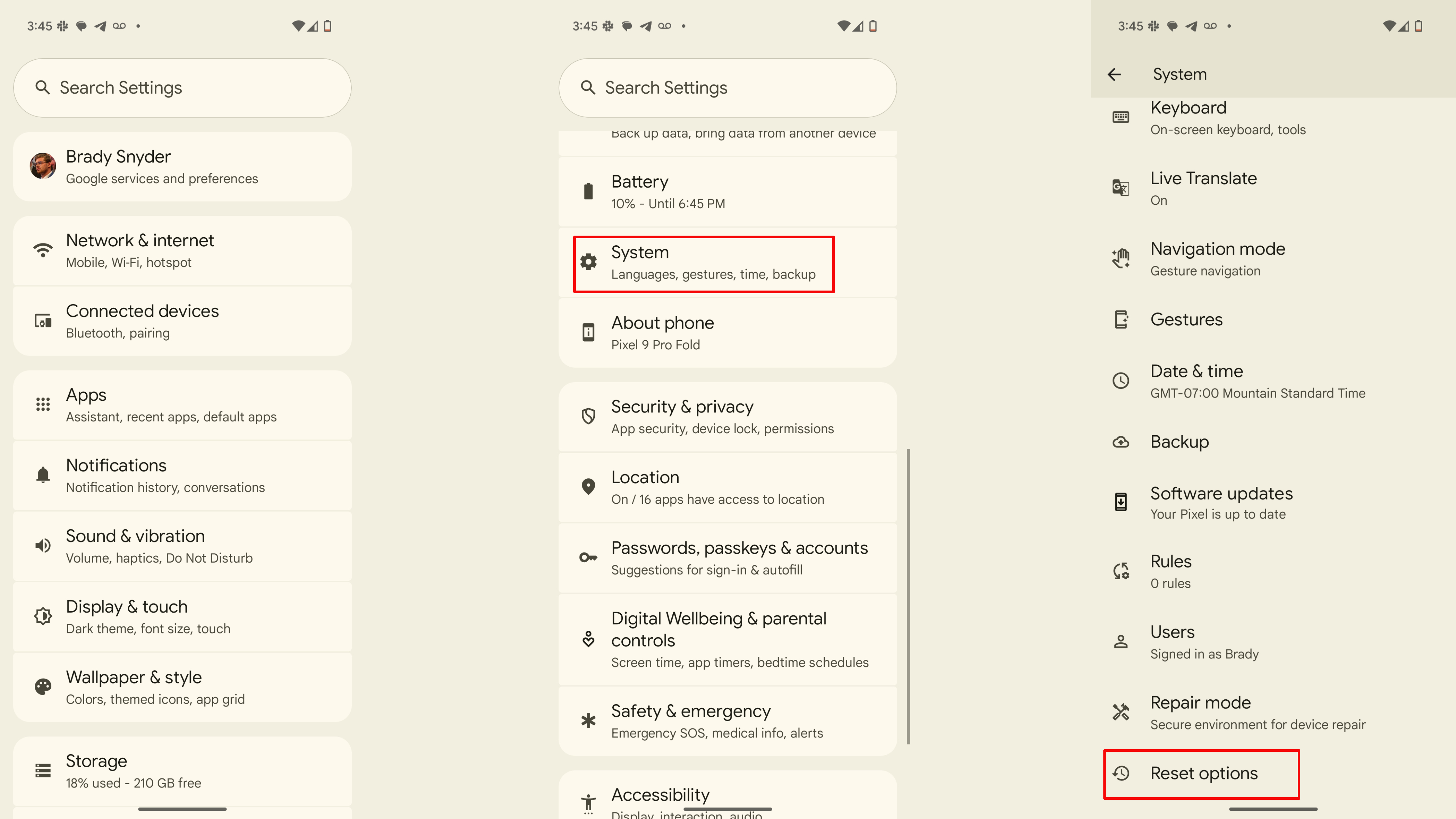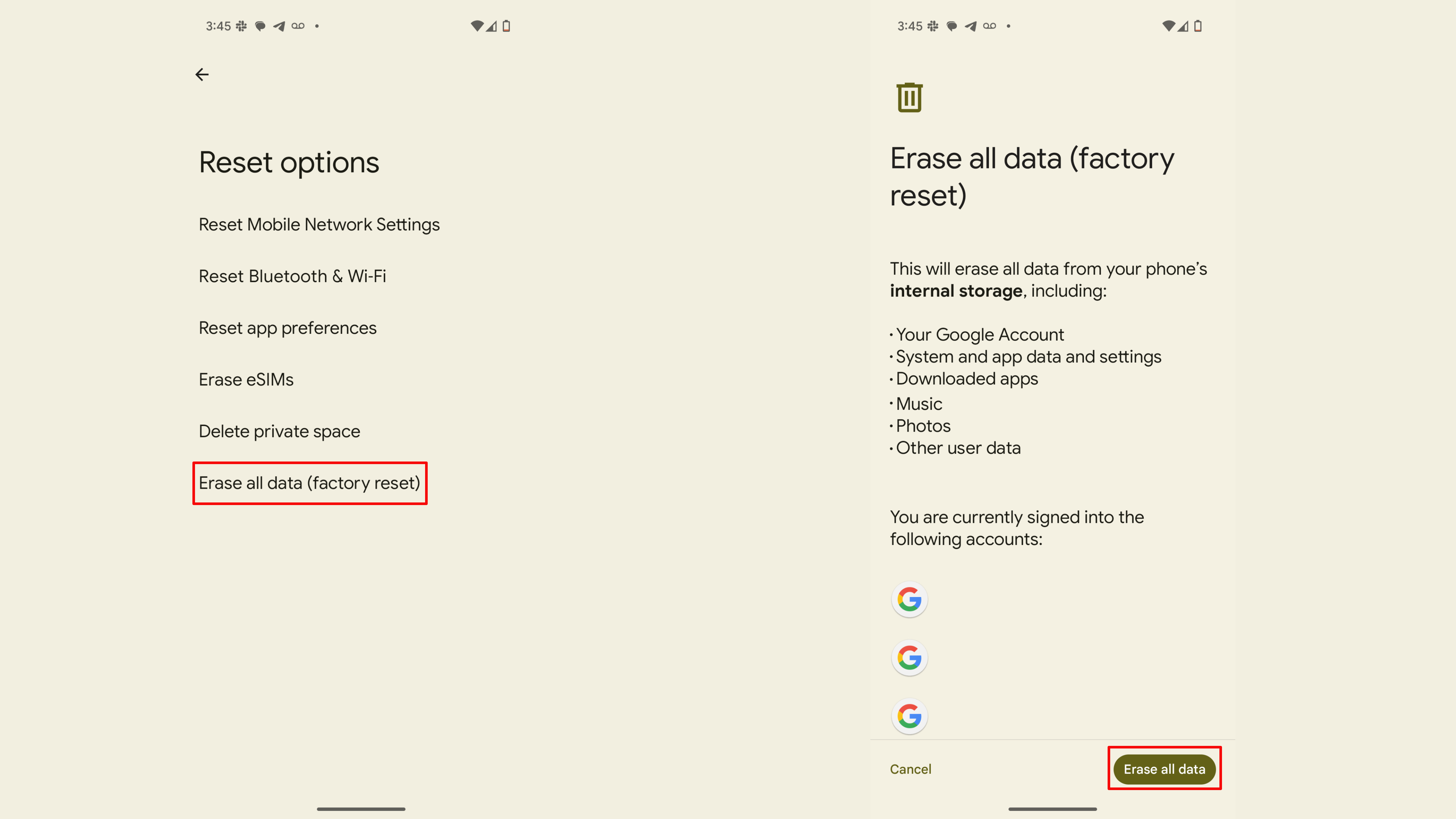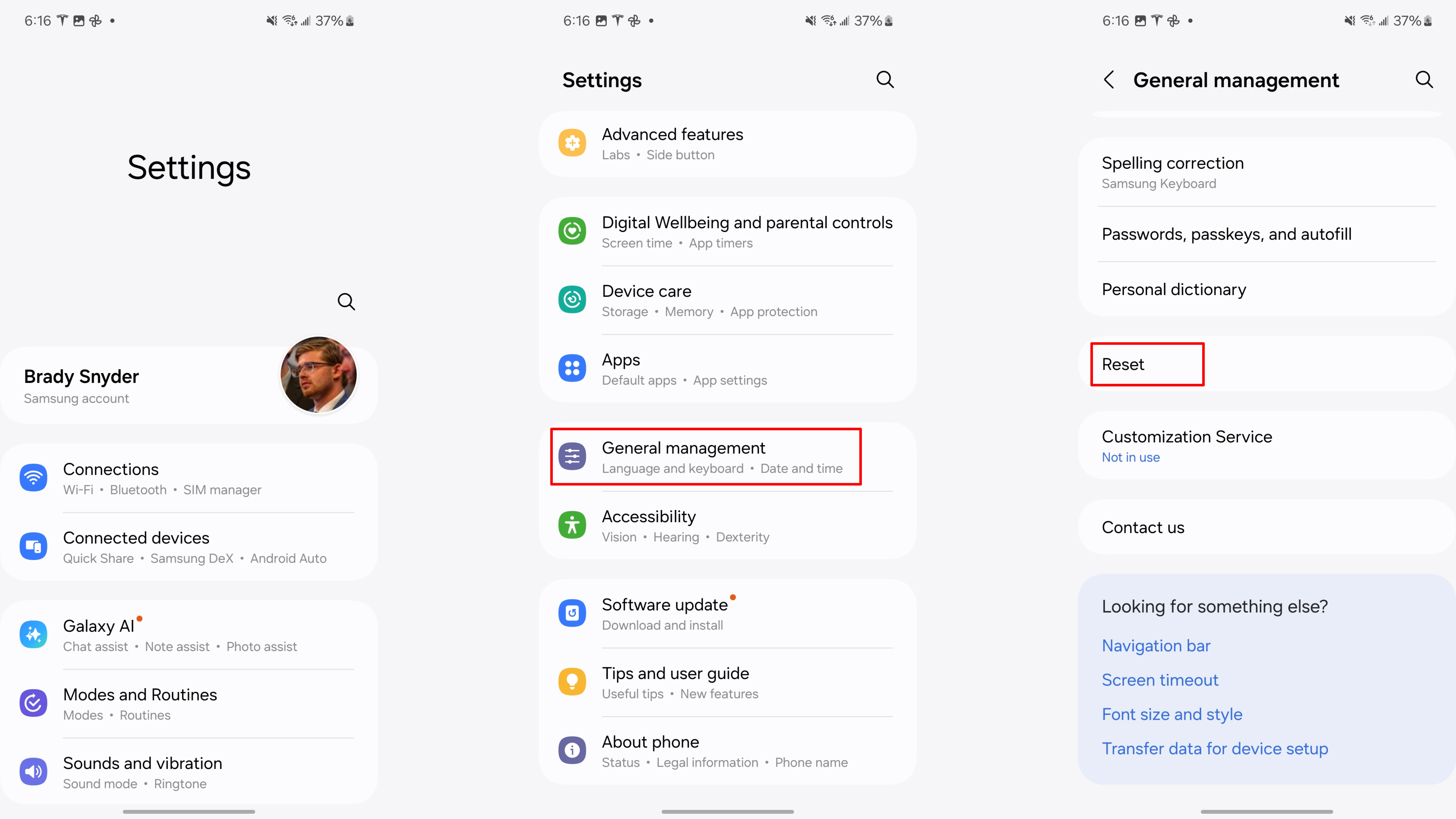
Regardless of what phone you're using — whether it's one of the best Android phones you can buy today or an older phone — there are several reasons why you might need to factory reset your phone.
Maybe your phone is overloaded with apps and running slow, you've downloaded a recent update and it's causing problems, or you just want to reset your phone before selling it. Here's how to reset your Android phone through the phone settings or via the recovery mode.
How to factory reset your phone from the settings menu
Before we get started, know that a factory reset will erase all the data on your phone. If you haven't backed up your contacts, pictures, videos, documents, and anything else (preferably in the cloud), you should do so now. Not sure where to back up your data before a factory reset? Read our guide on how to do that first.
Given the variety of phones available on Android, I'll be using the Google Pixel 9 Pro Fold and Samsung's Galaxy S24 FE as examples for this guide. The Pixel is a good baseline as the process is nearly identical on Android devices from Nokia, Xiaomi, Motorola, and other companies like OnePlus that retain a "stock" user interface.
As for the Galaxy S24 FE, the phone is running Samsung's One UI 6, and with the company being the largest manufacturer in the world of Android by some considerable margin, it makes sense to see how things differ. With that out of the way, let's get started.
The easiest way to factory reset your phone is through the settings menu. The location of the factory reset option might vary slightly based on the phone you're using, but once you've found the Backup and reset menu, you should be in the clear.
How to factory reset most Android phones: Pixel, OnePlus, Motorola, Nokia, etc.
1. Tap the Settings icon from your home screen or app drawer.
2. Swipe up to scroll down to the bottom of the settings menu.
3. Tap System.
4. Scroll down and tap Reset options.

5. Hit the Erase all data (factory reset) button.
6. Select Erase all data.
7. Enter your device PIN and follow any on-screen prompts that appear to finish.

Your device will reboot and you can go through the initial setup as if it were a new phone.
How to factory reset your Samsung phone
1. Tap the Settings icon from your home screen or app drawer.
2. Swipe up to scroll down to the bottom of the page.
3. Tap the General management tab.
4. Press Reset.

5. Hit Factory data reset.
6. Scroll down to the bottom of the page.
7. Hit the blue Reset button.
8. Enter your device PIN and tap Next. You may need to enter your Samsung account username and password to sign out before you can reset.
9. Follow any on-screen prompts that appear to finish.

Your phone will reboot and you'll have to go through the setup process again before you're able to restore your data.
How to factory reset your phone via recovery mode

If your phone is running into issues with an update or if there's a malfunction that's preventing the device from booting up, you'll be able to factory reset by heading into recovery mode. At a high level, you'll be able to enter recovery mode by pressing down on the volume up and power buttons simultaneously.
The process varies slightly based on the device you're using, as we'll see later on. Before we proceed to reset via recovery, you'll need to know about a security mode called Factory Reset Protection.
Google rolled out Factory Reset Protection (FRP) a few years ago, and the feature is now standard on all phones running Lollipop and above. Essentially, FRP ensures that someone can't just factory reset your lost or stolen phone and set it up as new by booting into recovery mode. The mode requires you to sign into a Google account associated with the device after a factory reset. If you fail, you won't be able to proceed with the setup.
Factory Reset Protection is a standard on all Android phones now.
Based on what I've encountered, FRP kicks in when you reset a device via the recovery mode and isn't an issue when you're resetting via the settings. If you're interested in knowing more about the feature and how it works, you should take a look at this excellent article on the subject:
So if you're looking to sell your device and are considering a factory reset, a better option would be to go through the aforementioned settings page. If you're unable to boot into your device and need a way of resetting data, then you can turn to recovery mode. Now that you understand the risks, here's how to reset your phone via recovery mode.
How to factory reset via recovery mode on a Pixel phone
1. If your phone is on, power it off.
2. Hold down the Power and Volume down buttons. Instead of booting up normally, you'll see "Start" in an arrow pointed at the power button. Here you use the Volume buttons to scroll and the Power button to select an option.
3. Press the Volume down button until you've highlighted Recovery mode.
4. Press the Power Button to start recovery mode.
5. When your phone reloads, you should see a screen that says "No command" with an Android robot in distress. Press and hold the power and volume up buttons together to load the recovery mode.
6. Using the Volume buttons to scroll through the menu, highlight Wipe data/factory reset.
7. Press the Power button to select.
8. Highlight and select Yes to confirm the reset.
9. Once the reset is complete, you will be bounced back to the same recovery mode menu. Press the Power button to select Reboot system now.
Your phone will power on and be reset to its factory settings. Your phone will reboot and you'll have to go through the setup process again before you're able to restore your data.
How to factory reset via recovery mode on a Samsung phone
1. If your phone is on, power it off.
2. Hold down the Power and Volume up buttons simultaneously. You should see the Samsung logo followed by an "Installing system update" screen.
3. After a few seconds, you should see a "No command" message flashing on the screen. Wait 10 to 15 seconds at this screen and the device will enter recovery mode.
4. Use the Volume buttons to scroll through the menu and the power button to make a selection.
5. Highlight Wipe data/factory reset.
6. Press the Power button to select.
7. Highlight and select Yes to confirm the reset.
8. Once the reset is complete, you will be bounced back to the same recovery mode menu. Press the Power button to select Reboot system now.
Your phone will power on and be reset to its factory settings. The next time you turn the phone on, you will go through the initial setup process as if it were a brand new phone. Once set up, you can go about restoring your data from wherever you had it backed up.
As mentioned earlier, if you're resetting your phone via recovery mode, Factory Reset Protection kicks in if you haven't already removed your Google accounts from the device. So if you're selling your device, make sure you remove your Google accounts and lock screen security before you do a hard reset through the recovery mode.
A trusty Android flagship
The Google Pixel 9 should be your go-to pick if you're in the market for a new Android phone. It has a capable Tensor G4 chip, a polished hardware and software experience, and solid cameras.







